
You are visiting the Singapore Kee Safety website from United States. Would you like to go to the United States site?

Ensuring safety when working at heights is crucial, whether it is a daily routine or an occasional task. Prioritizing safety is essential, as a single error can transform a regular job into a severe injury or even a fatality. Always be ready to safeguard your employees whenever there is a potential risk of falls. As an employer, the crucial role to play is ensuring your employees have the proper resources and knowledge they need to stay safe when working at elevation.
"According to the Occupational Safety and Health Administration (OSHA), falls are the leading cause of death in construction and the third leading cause of fatal injuries in all private industries."
According to the Workplace Safety and Health Council (WSHC) of Singapore, Working at Height (WAH) involves any work where a worker is exposed to the risk of falling a distance liable to cause personal injury. This includes activities conducted on:
The Ministry of Manpower (MOM) takes worker safety at elevated workplaces very seriously. They have implemented a robust framework of regulations and guidelines designed to ensure all workers engaged in Working at Height (WAH) activities are protected from potential falls. This comprehensive approach underscores MOM's commitment to safeguarding worker well-being and minimizing fall-related injuries and fatalities.
Work at Height is a high-risk activity, and falls from height have consistently been a leading cause of workplace fatalities in Singapore. In 2022 alone, there were 97 fatal workplace injuries, with 33% of them attributed to falls from height.
It is crucial to keep your work-at-height operations in check through continuous evaluation and initiative-taking risk management. When the tasks are performed at elevated levels, your priority must be on their effectiveness, efficiency, and alignment with your safety goals. After identifying the potential risks associated with working at height, you should implement strategies to mitigate them, ensuring a smooth and secure workflow.
This thorough evaluation process isn't just about avoiding pitfalls; it's designed to optimize your work processes. This optimization not only minimizes hazards but also enhances your overall workflow, leading to increased productivity and, most importantly, a safer working environment for your team.
Protecting yourself from occupational hazards is crucial and choosing the right Personal Protective Equipment (PPE) is the primary step, as its your first line of defence against workplace hazards. So Personal Fall Arrest Systems (PFAS) is the right option. All full-body harnesses meeting ANSI standards perform equally in terms of safety, irrespective of their cost. However, the price difference may offer added features. It could be a brand name, or it might translate into added functionality like extra D-rings, fireproof materials, or an arc-safe design. In some cases, a higher-priced harness may be more comfortable due to enhanced design.
Conduct thorough research to identify your specific needs. For instance, if your workers are welding at heights, a standard nylon harness may lack the necessary heat protection; in such cases, Kevlar harness could be the best choice. While comfort is essential, the primary focus should be on adjusting the harness for a proper fit, ensuring it functions as intended.
Selecting safety lanyards also demands careful consideration. Depending on the working height, a 6-foot lanyard with a deceleration device might not allow adequate protection. Instead, a retractable lanyard could be necessary. Every situation is unique, so evaluating working conditions and the task at hand is crucial to providing your employees with equipment that genuinely ensures their safety.
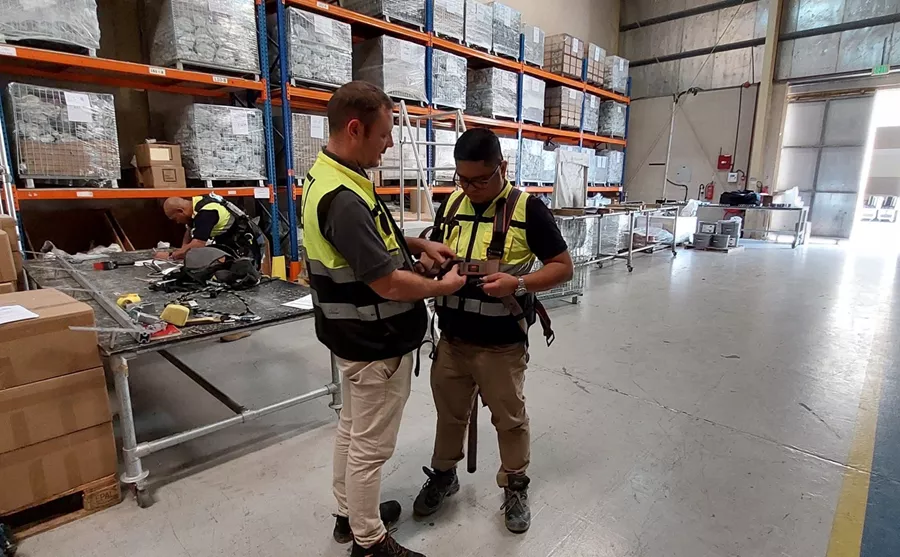
You've acquired the necessary tools to guarantee a secure work environment, but its effectiveness diminishes if the systems are worn or compromised. Harnesses and lanyards require annual, if not more frequent, inspections by a competent person—someone with the knowledge to identify potential hazards and the authority to address them.
Moreover, Personal Protective Equipment (PPE) should undergo inspection by the user before each use. It is imperative that individuals using these devices understand what to look for, distinguish between acceptable and unacceptable conditions, and know the proper steps to take if an issue arises. Conducting a pre-use check doesn't have to be time-consuming, but it must be thorough, as it could be the decisive factor between life and death.
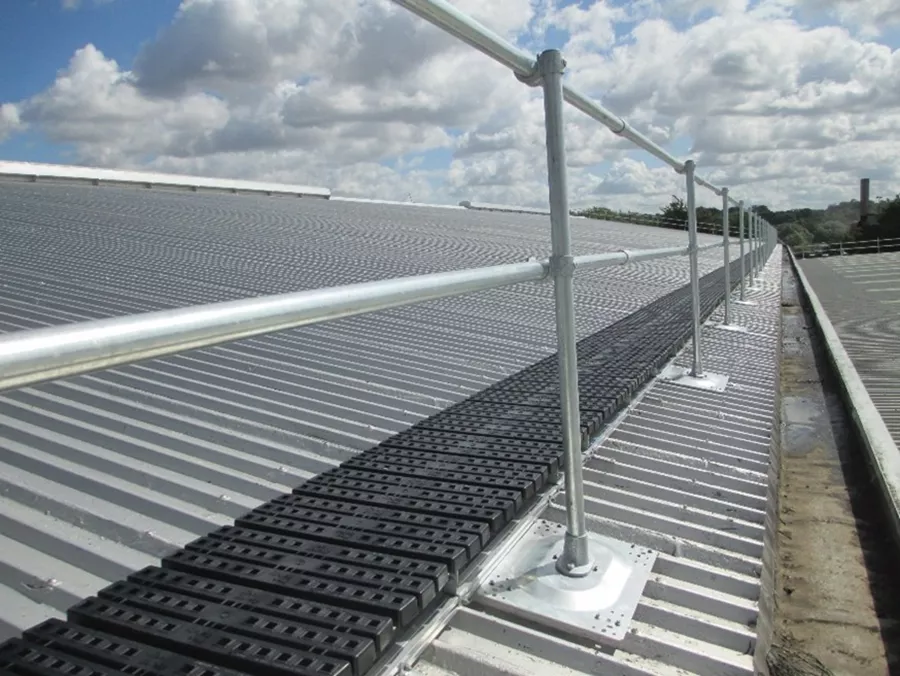
Using Structural Pipe fillings or railings as a form of fall protection is a smart and straightforward way to keep workers safe. It's a passive protection method, meaning workers don't need extra training or equipment to use it— they just need to stay within the rail. There are several types of railing systems for various rooftops, like non-penetrating roof railing, metal roof railing, railing for roofs with limited access. Once in place, these rails are the easiest to use, provides continuous protection without requiring workers to actively do anything. This not only prioritizes safety but also makes it simpler for everyone to follow safety regulations, contributing to a safer and more efficient work environment.
From Evaluating the potential risk and Selection to Inspection of PPE, you realized that lot of factors are involved when it comes to fall safety, especially PPE.
Just think!!! How effective is a properly configured harness and lanyard setup if the anchor point is incapable of supporting the intended load?
What characteristics define a suitable anchor point for fall protection?
An acceptable anchor point is not represented by a PVC pipe or a decorative steel element on the roof. What criteria distinguish a reliable anchor point in ensuring safety at heights?
“An anchor point meets the necessary criteria if it has been either designed and approved by a professional engineer who has calculated the expected loads or if it is capable of unequivocally supporting a load factor of 22 Kilonewtons or Max Capacity (1 User) 136 Kg."
When you are working at heights, it is crucial to prioritize safety using proper equipment’s on a different conditions. Take, for instance,
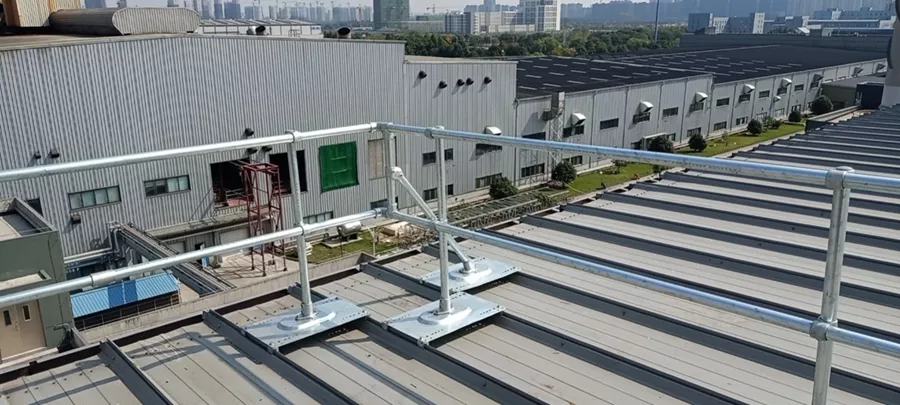
Solution: In this scenario, choosing the proper solution with equipment is effectively addressed by implementing KeeGuard® rooftop guardrail system. The solution lies in the collective fall protection provided by the modular guardrail barrier. The guardrail system eliminates the need for you to navigate close to the unprotected edges of the rooftop, reducing the risk of accidental falls. It serves as a non-penetrative and reliable solution that can be easily installed without damaging the roof structure.
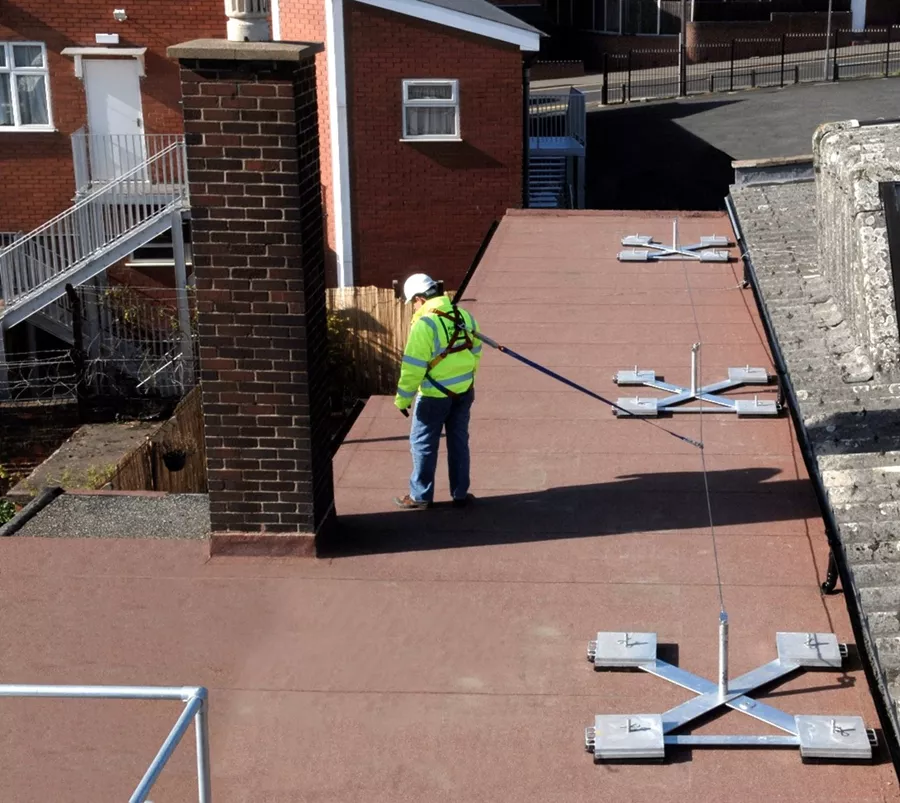
Solution: To address this challenge while prioritizing worker safety, they implemented the Kee Anchor® Deadweight Anchor system. This innovative solution provided a reliable and non-penetrative method for securing lifelines and ensuring the safety of workers at heights without compromising the integrity of the roof structure. The Kee Anchor® Deadweight Anchor system is specifically designed to distribute the load evenly across the roof surface, eliminating the need for drilling or penetrating the roof membrane.
By choosing the Kee Anchor® Deadweight Anchor system, not only met the client's strict requirements for non-penetrative solutions but also ensured the safety and well-being of workers operating at heights. This solution not only addressed immediate safety concerns but also provided a long-term, reliable anchorage system that can be easily repositioned or removed as needed, without leaving any lasting impact on the roof structure.
Ensuring the proper use of aerial lifts is a mandate, especially when it comes to fall protection. Suppose in the case of boom lifts, you must be consistently and correctly tied-off at any height, using engineered anchor points designed for the lift. This means avoiding common oversights, such as wrapping the lanyard around the rails and ensuring the lanyard's suitability for the specific working height.
The significance of proper tie-off cannot be overstated, as it directly impacts the effectiveness of fall protection measures. Scissor lifts, although not federally mandated for tie-off, carry their own set of risks. Even seemingly minor oversights, such as failing to close gates or secure chains, can pose life-threatening hazards.
One of the universal measures to reduce the risk of falls is maintaining a firm footing on the work platform or ground, an elemental yet often overlooked practice. These precautions and adherence to safety protocols are not only regulatory requirements but essential steps toward safeguarding lives in aerial lift operations. Regular training, awareness, and meticulous attention to safety details are imperative for a secure and incident-free work environment.
Ladders are super important at work to avoid accidents. But sometimes, we don't realize how crucial they are. Before using a ladder, we should check if it's the best choice for the job. Also, make sure everyone knows how to use it safely. Ignoring this can lead to accidents, showing how vital ladders are for keeping workplaces safe. To handle the ladder safely, you need to concentrate on the 3 points, they are as follows:
Follow these guidelines for a secure extension ladder experience. Even with basic steps of ladders, ensure you receive proper training. Addressing even the simplest steps in training can significantly reduce workplace hazards.
For fixed ladders exceeding 24 feet, you must prioritize safety by implementing a ladder safety system. This includes a lanyard, harness, and a continuous vertical lifeline (cable or rigid rail) spanning the ladder's height, as cages are no longer considered sufficient fall protection. Additionally, address the transition at the top with a ladder safety gate for a secure and safe experience during the climb.
When you think about when and what kind of fall protection is needed. According to OSHA, it considers three things: how often the work is done, how long it takes, and where it's happening.
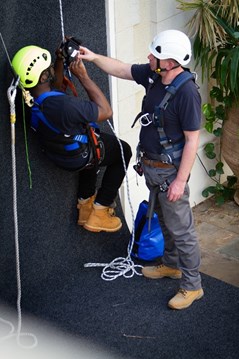
Emphasizing the importance of employee safety at heights cannot be overplayed. It is crucial to ensure that you or your workers receive proper training. This isn't just a legal requirement; it's a vital step in preventing errors and confusion when any individuals are tasked with protecting themselves at elevated positions. Falls consistently rank as the leading cause of fatalities in construction and are not confined to that industry alone. Numerous other sectors witness tragic accidents due to falls.
Equipping the workers working at heights with the necessary knowledge is crucial in keeping them safe. Working at heights demands focused training, attention, and the implementation of appropriate safety measures. Skipping important steps or not paying enough attention can cause serious injuries or even deadly accidents.
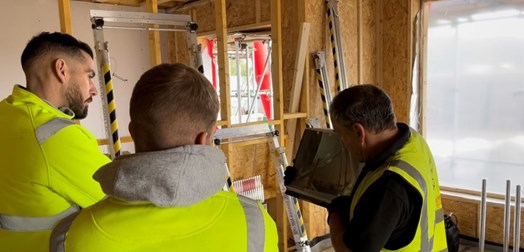
Training serves as a powerful tool to mitigate fall hazards. By educating your workforce, you empower them to navigate elevated workspaces with confidence and competence. This not only safeguards their well-being but also contributes to a safer work environment overall. Remember, investing in training is an investment in the well-being of the employees and the overall success of the workplace.
Working at height poses significant risks to employees, making safety paramount in any workplace. With falls being a leading cause of workplace fatalities, it's crucial to implement rigorous safety measures. The blog outlines a comprehensive approach to ensuring staff safety while working at height, incorporating insights from regulations and guidelines. Key tips include thorough evaluation of tasks and risks, selecting proper PPE, regular inspection of equipment, utilizing railing or structural fittings, choosing suitable anchor points, and employing appropriate equipment solutions. Additionally, emphasizing proper use of aerial lifts, and ladder safety, understanding fall protection requirements, and providing comprehensive training are vital. By prioritizing these measures, employers can create a safer work environment and reduce the risk of accidents. Also, external factors like brand image, avoid penalties and mitigate legal cases.